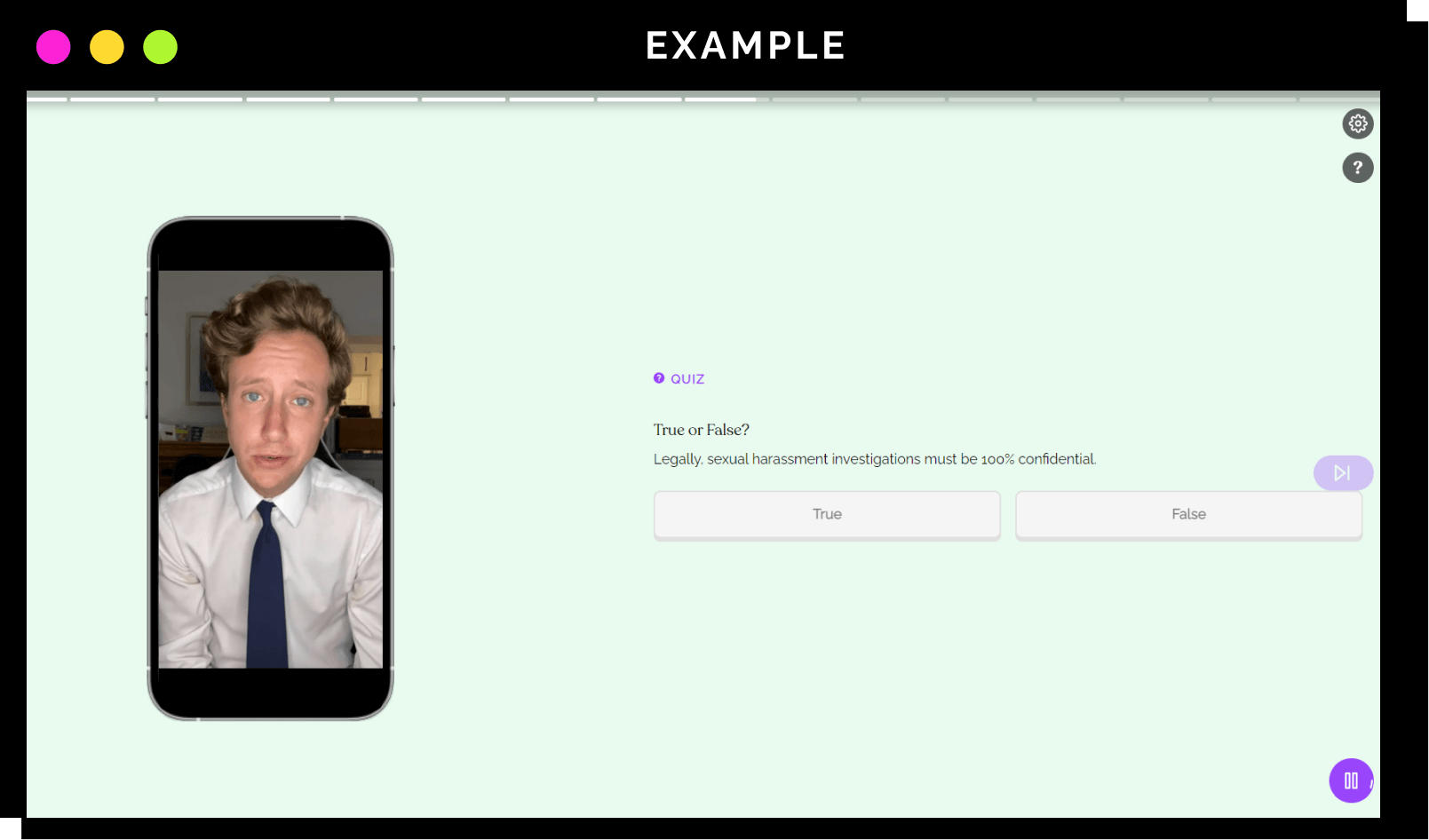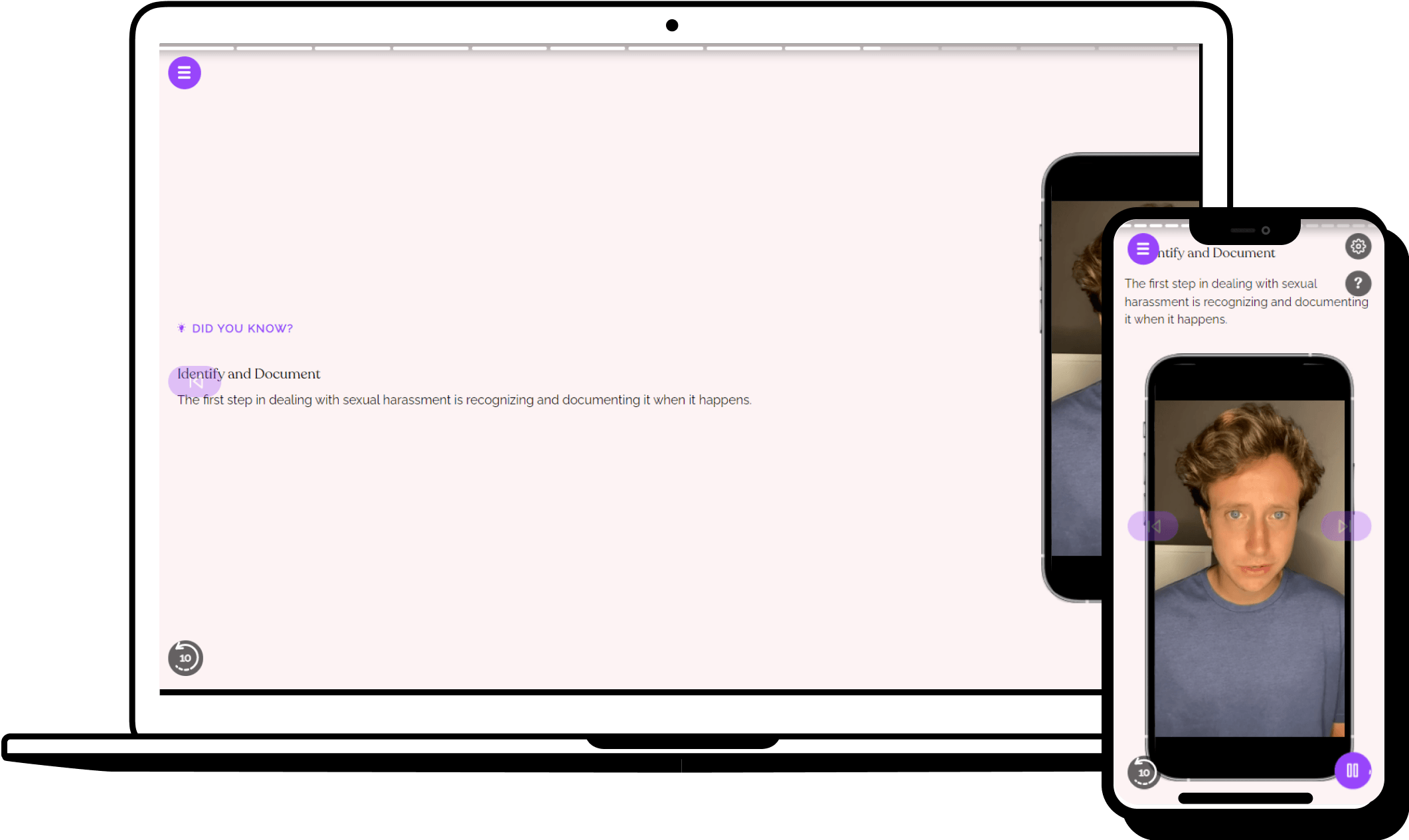Reporting Harassment
Harassment in the workplace can be a difficult and uncomfortable experience, but it is important to know what to do should you experience or witness it. In this chapter, we will explore the various ways to report harassment in the workplace, including the steps to take and the resources available. We will also discuss the potential risks and rewards of reporting harassment, so you can make the best decision for your situation.

Employer’s responsibility when Harassment is reported

Any claims of workplace harassment must be taken seriously by employers. Employers should go above and beyond to ensure that rules, regulations, and expectations are understood and upheld in order to foster a safe environment for workers. The procedures for reporting and looking into allegations of harassment, as well as the consequences of breaking the rules, should all be made clear in these policies. Employers should also make sure that any employees who report harassment do not face reprisals, and that the confidentiality of both the accuser and the reporter is upheld throughout the investigation.

Why is having a clear reporting process crucial in the workplace?

A clear reporting procedure is essential in the workplace because it establishes expectations for workers, enables swift problem-solving, and sets a standard for communication and accountability. All employees should be made aware of their roles and responsibilities in reporting, allowing conflicts and misunderstandings to be more easily resolved. Additionally, reporting establishes a trustworthy system for tracking employee performance and holding people responsible for their deeds. In the end, a transparent reporting procedure can contribute to a more effective and pleasant workplace.
Best practices For reporting harassment in the workplace
Harassment in the workplace can be a difficult and intimidating situation to navigate. It can be difficult to know what to do or who to talk to. Here are some best practices to help with reporting harassment in the workplace:
Follow Up
After reporting the harassment, it’s important to follow up with your employer to ensure that your complaint is being taken seriously and is being addressed. Request a meeting with the appropriate personnel to discuss the situation. Ask when they expect the issue to be resolved and what steps they are taking to investigate the problem. Be sure to keep a record of all of your conversations with your employer. If you are still not satisfied with your employer’s response, you may want to consider filing a complaint with the Equal Employment Opportunity Commission or a similar agency.
Document the incidents with as much detail as possible
When documenting the incident, make sure to include as much detail as possible about the incident, such as the date and time it occurred, the location, a description of what happened, any witnesses, and the response of the alleged harasser. If there was evidence such as emails, texts, or other documents, make sure to provide copies of those as well.
Report the Harassment
When reporting harassment in the workplace, it is important to provide as much information as possible. In addition to time and date details, be sure to include the names of any witnesses, and the specific behaviors that were inappropriate. If possible, make a written report and keep a copy for your own records. It is also important to report the harassment to the appropriate person in your organization. This could be a supervisor, human resources department, or another designated contact. If you are not sure who to report the harassment to, ask your supervisor or HR department for assistance.
What is Reporting?
Reporting
Reporting is the communication of information from one person or organization to another. It is typically used to provide information on the progress or status of an activity, project, or task. Reports can be written, verbal, or visual, depending on the needs of the organization or individual.

Not Reporting Does Not Make Harassment The Target’s Fault

It is important to remember that the fault lies with the harasser and not the target. The target should never be made to feel like they are responsible for the harassment they experience or that they should have done something differently. Often times, targets of harassment can feel scared, intimidated, and ashamed to report the incident. This is why it is so important for employers to have strong policies against harassment and to make reporting easy and accessible for all employees. Fear of itimidation or retaliation can cause victims not to report harassment, and EasyLlama's [Anonymous Reporting and Case Management](https://www.easyllama.com/anonymous-reporting-tool/) tool ensures employee confidentiality to promote a healthier workplace culture.
 Learners love easyllama
Learners love easyllama
What is the investigation process like in a workplace harassment claim?
Investigating a harassment claim in the workplace can be a delicate process and it is important to get it right. This process should be taken seriously and with care to ensure that the appropriate action is taken. Here are some steps in the investigation process:
- Gather the Facts
- Assess the Allegations
- Interview Witnesses
- Make a Report
- Take Appropriate Action
Get An Instant Free Course Preview!

Empower Employees to report inappropriate conduct through employee education

By providing employees with an overview of what constitutes harassment, what to do if they experience it, and how to report it, they can be better equipped to identify any potential issues. This chapter also provides helpful tips on how to make sure that any reports are respectful and professional. By educating employees on the importance of reporting harassment, EasyLlama can help ensure that employees feel safe and respected in the workplace, and that any inappropriate behavior is handled quickly and appropriately.
Helping over 8,000+ organizations create a safer, more inclusive company culture.
 Get more from easyLlama
Get more from easyLlama
The Most Comprehensive online Sexual Harassment Prevention Course
Sexual Harassment prevention is an essential training course to ensure that employees are aware of their duty to report any behavior of a sexual nature that is unwelcome. The course covers:
Chapter 1: Introduction
Chapter 2: What is Sexual Harassment?
Chapter 3: Verbal, Visual, and Physical Harassment
Chapter 4: Quid Pro Quo Harassment
Chapter 5: Third-Party Harassment
Chapter 6: Flirting and Dating in the Workplace
Chapter 7: Other Types of Harassment and Discrimination
Chapter 8: Abusive Conduct and Bullying
Chapter 9: Online Harassment
Chapter 10: Reporting Harassment
Chapter 11: Retaliation
Chapter 12: Positive Work Culture
Chapter 13: Bystander Intervention
Chapter 14: Preventing Workplace Harassment
Chapter 15: If You Are Accused
Chapter 16: What Have We Learned?
Get Started In Just 5 minutes
See how EasyLlama can support your organizational goals and help build a safe and inclusive company culture